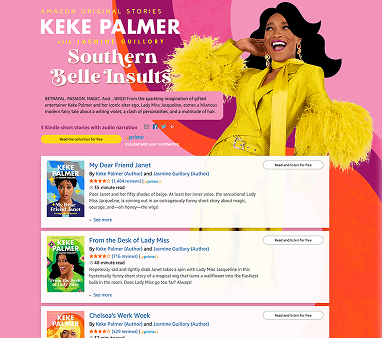MODERNA MARKETING
Scaling 15 product launches using a modular site system
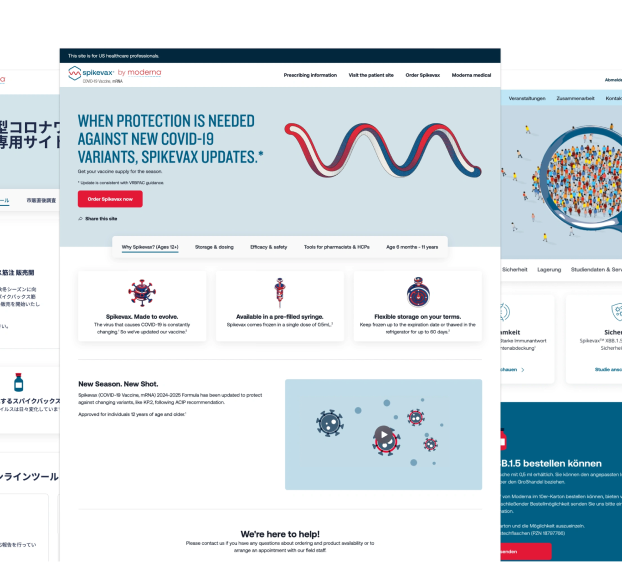
Overview
Moderna was spending millions building one-off marketing sites for COVID-19 products and expected to launch 15 additional products within 5 years. To scale efficiently, we needed a reusable, cost-effective solution. Additionally, we needed sites built trust with users, and were complaint across many different regulatory environments.
I led the design of a modular website system – templates, component library, and governance – that marketing and engineering could assemble rapidly for any launch. Result: ~$8.4M saved per year and development cycles reduced from 6 months to 1 week.
Role
Principal UX design lead
responsibilities
Design framework; Partnered with legal and regulatory teams across the globe to meet each region’s compliance; managed junior designers
collaborators
Engineers, product managers, global marketing leads, regulatory team
impact
Reduced development time of a website from 6 months to 1 week
Increased natural search traffic by 470%
$8.4 million dollars saved annually
Reduced bounce rate to our product sites by 30%
The project
Customer problems
Global marketing leads needed a faster, lower-effort way to launch sites that stayed on-brand–while still giving them the flexibility to localize content for their audience and comply with country-specific regulations. End customers struggled to understand critical information. Storage/handling and administration steps weren’t clearly presented, creating confusion and errors.
Business problem
Moderna’s reliance on bespoke, one-off marketing sites drove multimillion-dollar spend and slow time-to-market – an unsustainable model with 15 launches planned in the next five years.
Success metrics
Reduce the number of Moderna websites; reduce the time to develop a marketing site by at least 50%; migrate all Spikevax sites to templates and the latest Moderna design system
Approach
Groundwork: Content audit, market analysis, and interviews
I audited Moderna’s global sites and other marketing sites from pharmaceutical companies, cataloging page types and content patterns. I built a content inventory and taxonomy. I also interviewed global marketing leads and regulatory partners to map country-specific rules.

Mix-n-match modules for faster launches
I explored different site frameworks: narrative, scroll-based layouts and tabbed information architecture so consumers and HCPs could jump between sections quickly.
I also created a reusable module set (the common blocks markets use most). Markets could mix and match modules to fit local requirements, while engineering benefited from standardized, pre-defined components that accelerated development.
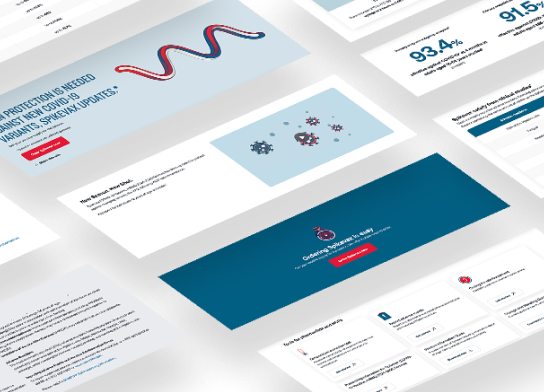
Validating with real users
I partnered with our UX researcher to run a UserTesting.com study. We A/B tested the new Spikevax site built on my template against the legacy site; clarity scores jumped and participants unanimously preferred the new experience. Second, we ran module-level usability tests on complex content. For example, for “Storage and handling,” we explored alternate presentations to identify the most understandable pattern before rollout.

Pilot in Australia
Australia served as the first market pilot. I partnered with the country marketing lead to build a RSV disease education site using the new template, documenting market-specific needs and edge cases. The objective was to validate fit-for-purpose, surface gaps, and capture improvement before a broader rollout.
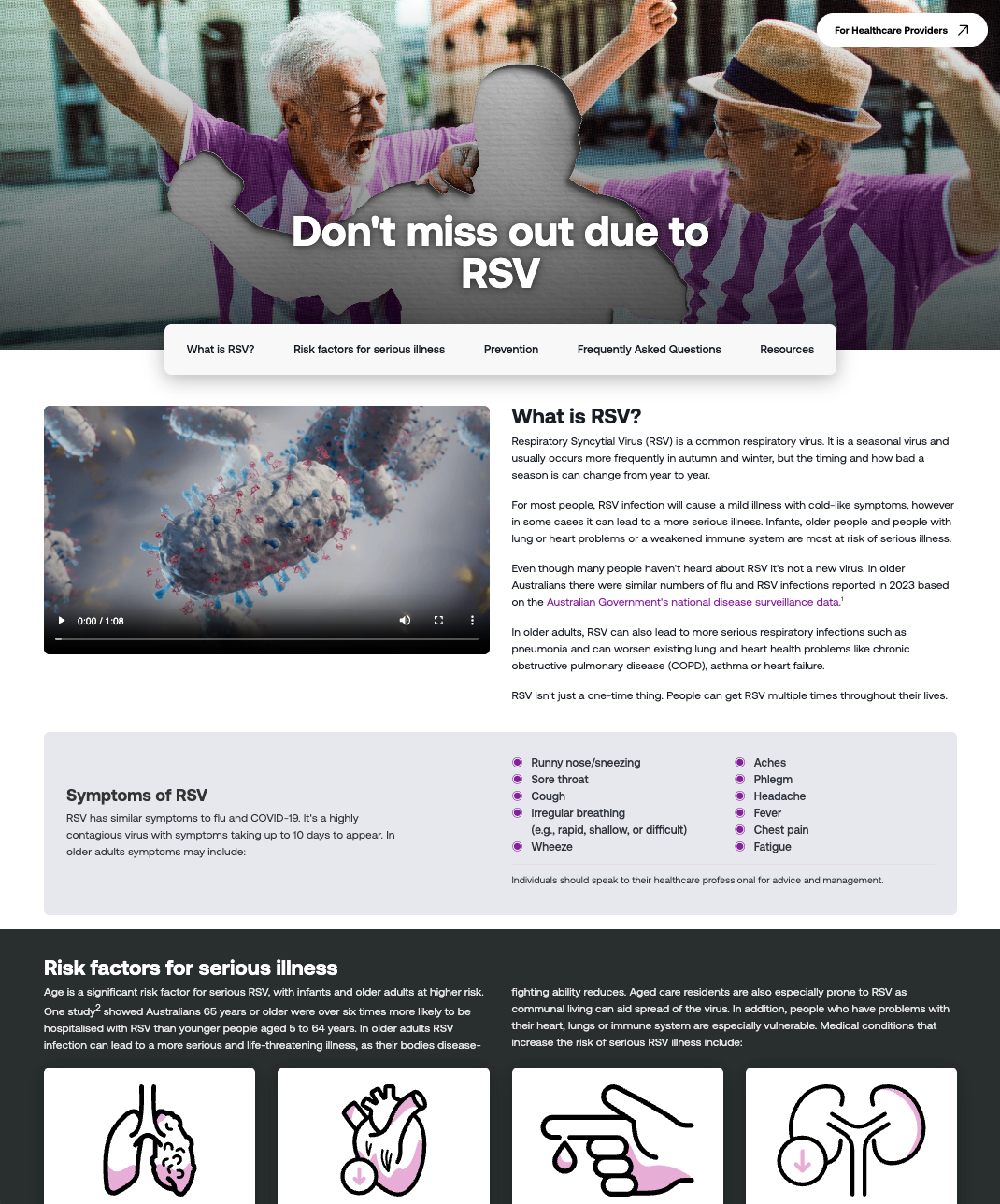
Nine markets, one system
I led the global rollout, onboarding nine country teams to the new web system. I walked each market through how the templates, components, and governance worked, then partnered with local leads to identify gaps and country-specific needs. Where new modules were required, I prioritized and added them to the shared library.
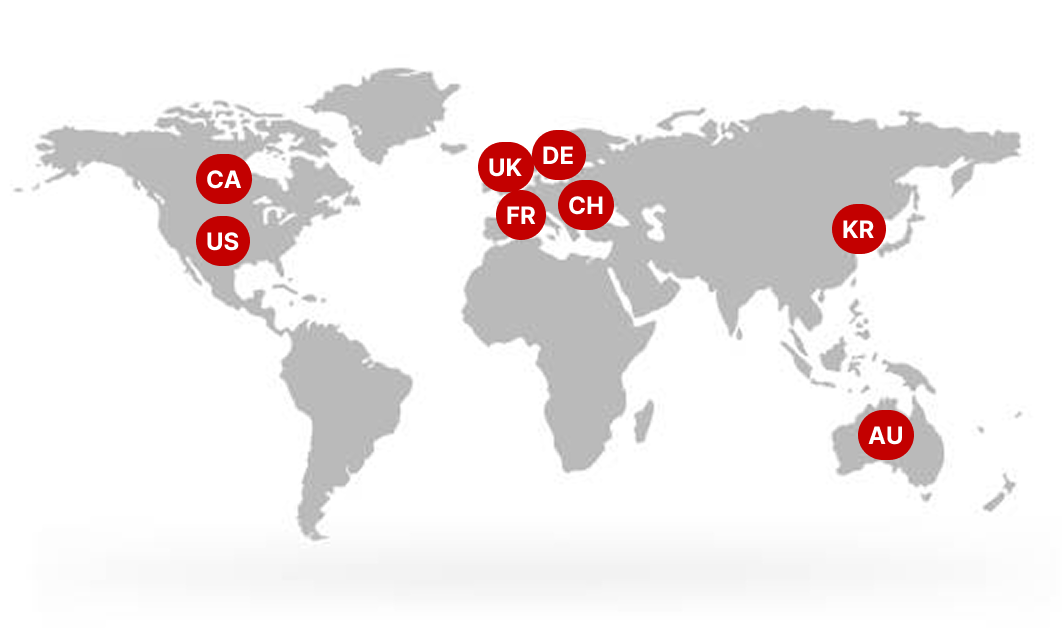
Key insights
Reuse, then refine
Most markets preferred a starting point over a blank canvas. Germany assembled the first site using the modules; other European countries then cloned that configuration and tweaked the content for local needs.
Too restricted, then course-corrected
I initially locked down colors and fonts too tightly– an overcorrection that sped development but frustrated markets and limited local brand expression. I course-corrected by permitting a third brand color and custom headline font, preserving engineering simplicity while giving teams the latitude they needed.
The solution
Developing the marketing templates required balancing customization for campaign needs with maintaining engineering simplicity and development speed. A couple of examples:
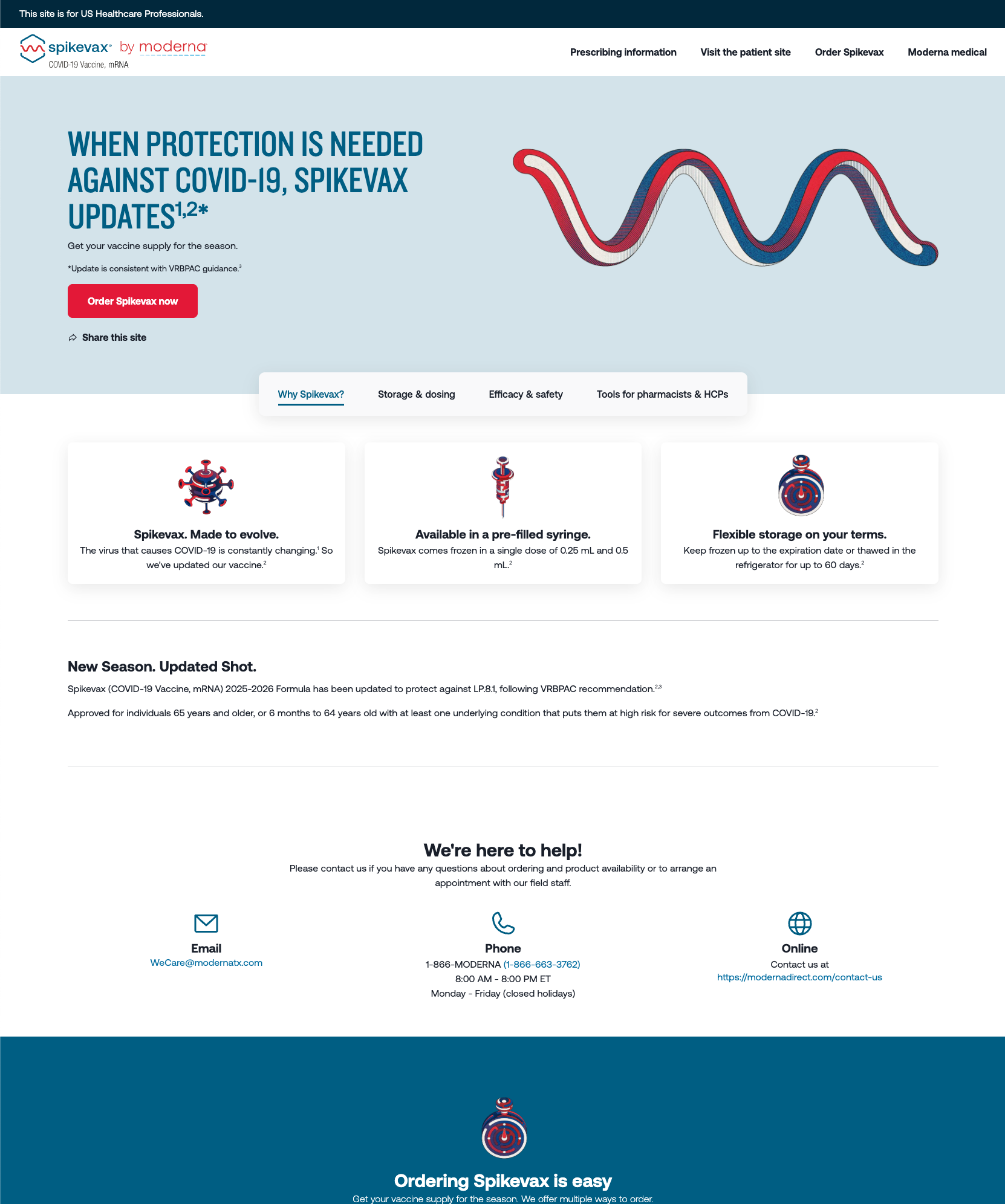
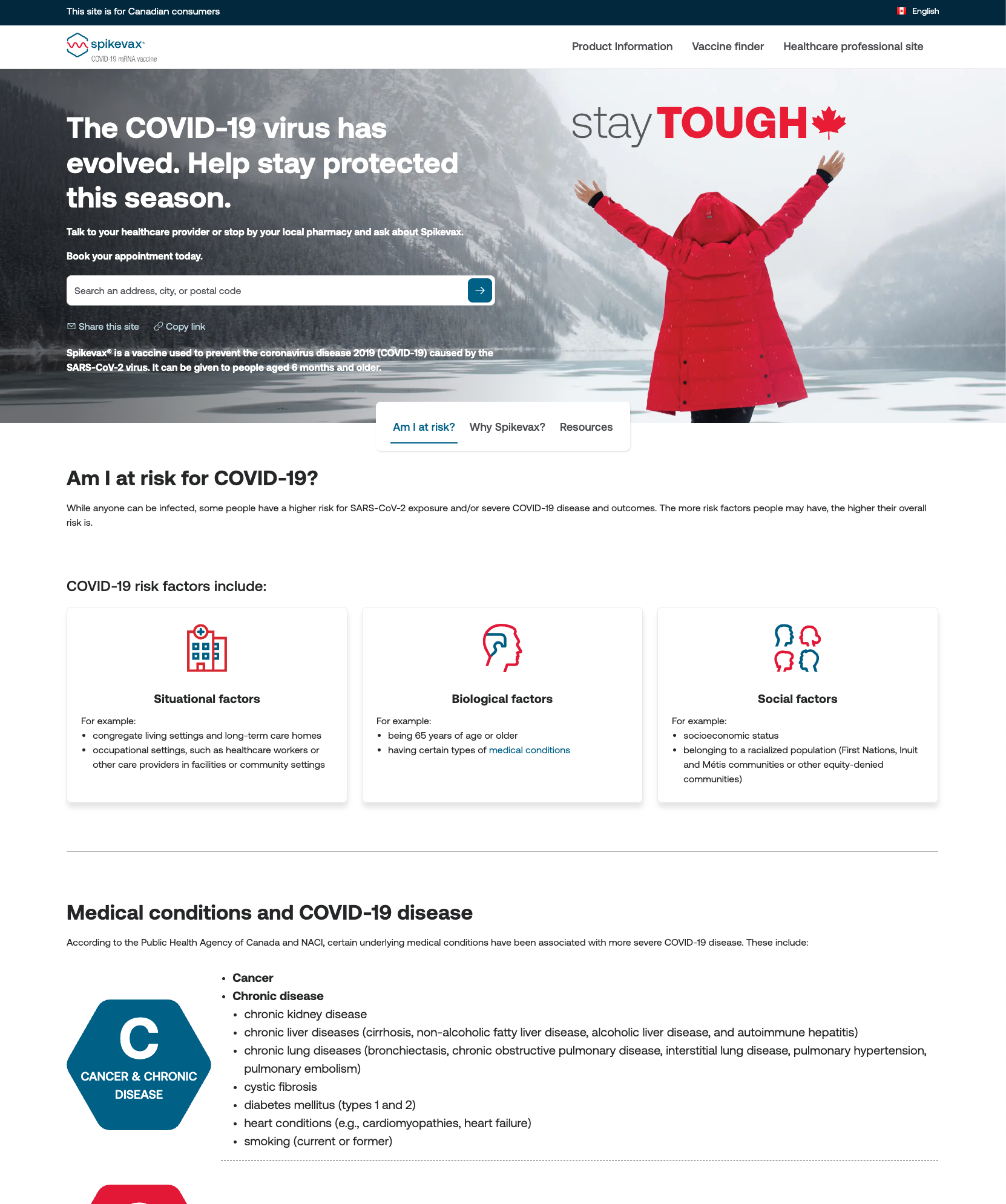
The business impact
$8.4M
Annual savings
96%
Reduction in development time
30%
Reduction in bounce rate
470%
Increase in natural search traffic
“The new system has significantly improved our workflow by enabling us to focus directly on content development rather than spending time on designing templates from scratch.”
–Alfie Puey, Marketing lead in Australia
“Informative, organized, and easy to understand vaccine info – this is how I would describe the website. I would be very likely to recommend it, especially during flu and COVID seasons.”
–Healthcare professional research participant
MODERNA MARKETING
Scaling 15 product launches using a modular site system
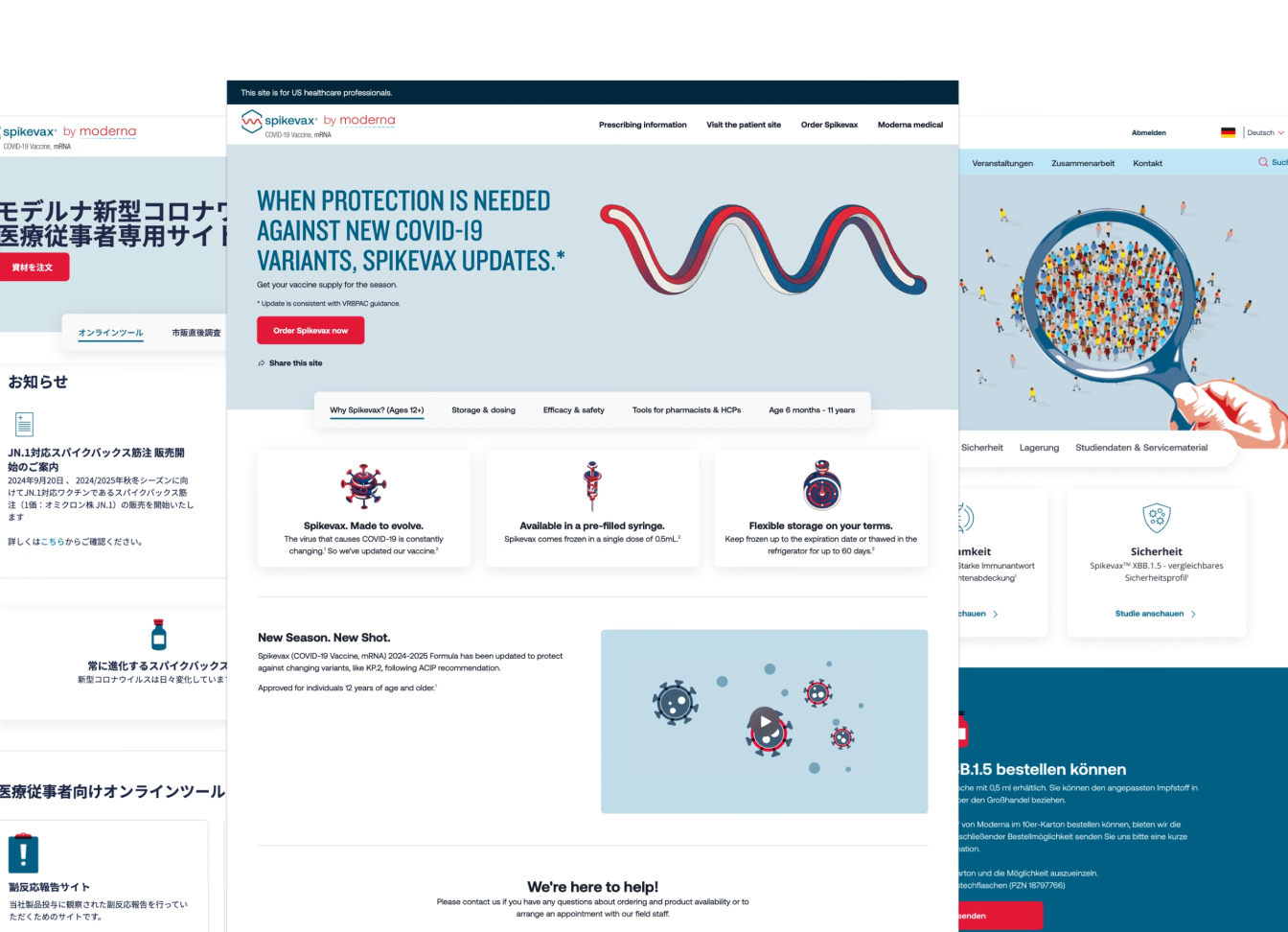
Overview
Moderna was spending millions building one-off marketing sites for COVID-19 products and expected to launch 15 additional products within 5 years. To scale efficiently, we needed a reusable, cost-effective solution. Additionally, we needed sites built trust with users, and were complaint across many different regulatory environments.
I led the design of a modular website system – templates, component library, and governance – that marketing and engineering could assemble rapidly for any launch. Result: ~$8.4M saved per year and development cycles reduced from 6 months to 1 week.
Role
Principal UX design lead
responsibilities
Design framework; Partnered with legal and regulatory teams across the globe to meet each region’s compliance; managed junior designers
collaborators
Engineers, product managers, global marketing leads, regulatory team
impact
Reduced development time of a website from 6 months to 1 week
Increased natural search traffic by 470%
$8.4 million dollars saved annually
Reduced bounce rate to our product sites by 30%
The project
Customer problems
Global marketing leads needed a faster, lower-effort way to launch sites that stayed on-brand–while still giving them the flexibility to localize content for their audience and comply with country-specific regulations. End customers struggled to understand critical information. Storage/handling and administration steps weren’t clearly presented, creating confusion and errors.
Business problem
Moderna’s reliance on bespoke, one-off marketing sites drove multimillion-dollar spend and slow time-to-market – an unsustainable model with 15 launches planned in the next five years.
Success metrics
Reduce the number of Moderna websites; reduce the time to develop a marketing site by at least 50%; migrate all Spikevax sites to templates and the latest Moderna design system
Approach
Groundwork: Content audit, market analysis, and interviews
I audited Moderna’s global sites and other marketing sites from pharmaceutical companies, cataloging page types and content patterns. I built a content inventory and taxonomy. I also interviewed global marketing leads and regulatory partners to map country-specific rules.

Mix-n-match modules for faster launches
I explored different site frameworks: narrative, scroll-based layouts and tabbed information architecture so consumers and HCPs could jump between sections quickly.
I also created a reusable module set (the common blocks markets use most). Markets could mix and match modules to fit local requirements, while engineering benefited from standardized, pre-defined components that accelerated development.

Validating with real users
I partnered with our UX researcher to run a UserTesting.com study. We A/B tested the new Spikevax site built on my template against the legacy site; clarity scores jumped and participants unanimously preferred the new experience. Second, we ran module-level usability tests on complex content. For example, for “Storage and handling,” we explored alternate presentations to identify the most understandable pattern before rollout.

Pilot in Australia
Australia served as the first market pilot. I partnered with the country marketing lead to build a RSV disease education site using the new template, documenting market-specific needs and edge cases. The objective was to validate fit-for-purpose, surface gaps, and capture improvement before a broader rollout.

Nine markets, one system
I led the global rollout, onboarding nine country teams to the new web system. I walked each market through how the templates, components, and governance worked, then partnered with local leads to identify gaps and country-specific needs. Where new modules were required, I prioritized and added them to the shared library.

Key insights
Reuse, then refine
Most markets preferred a starting point over a blank canvas. Germany assembled the first site using the modules; other European countries then cloned that configuration and tweaked the content for local needs.
Too restricted, then course-corrected
I initially locked down colors and fonts too tightly– an overcorrection that sped development but frustrated markets and limited local brand expression. I course-corrected by permitting a third brand color and custom headline font, preserving engineering simplicity while giving teams the latitude they needed.
The solution
Developing the marketing templates required balancing customization for campaign needs with maintaining engineering simplicity and development speed. A couple of examples:


The business impact
96%
Reduction in development time
$8.4M
Annual savings
30%
Reduction in bounce rate
470%
Increase in natural search traffic
“The new system has significantly improved our workflow by enabling us to focus directly on content development rather than spending time on designing templates from scratch.”
–Alfie Puey, Marketing lead in Australia
“Informative, organized, and easy to understand vaccine info – this is how I would describe the website. I would be very likely to recommend it, especially during flu and COVID seasons.”
–Healthcare professional research participant
MODERNA MARKETING
Scaling 15 product launches using a modular site system
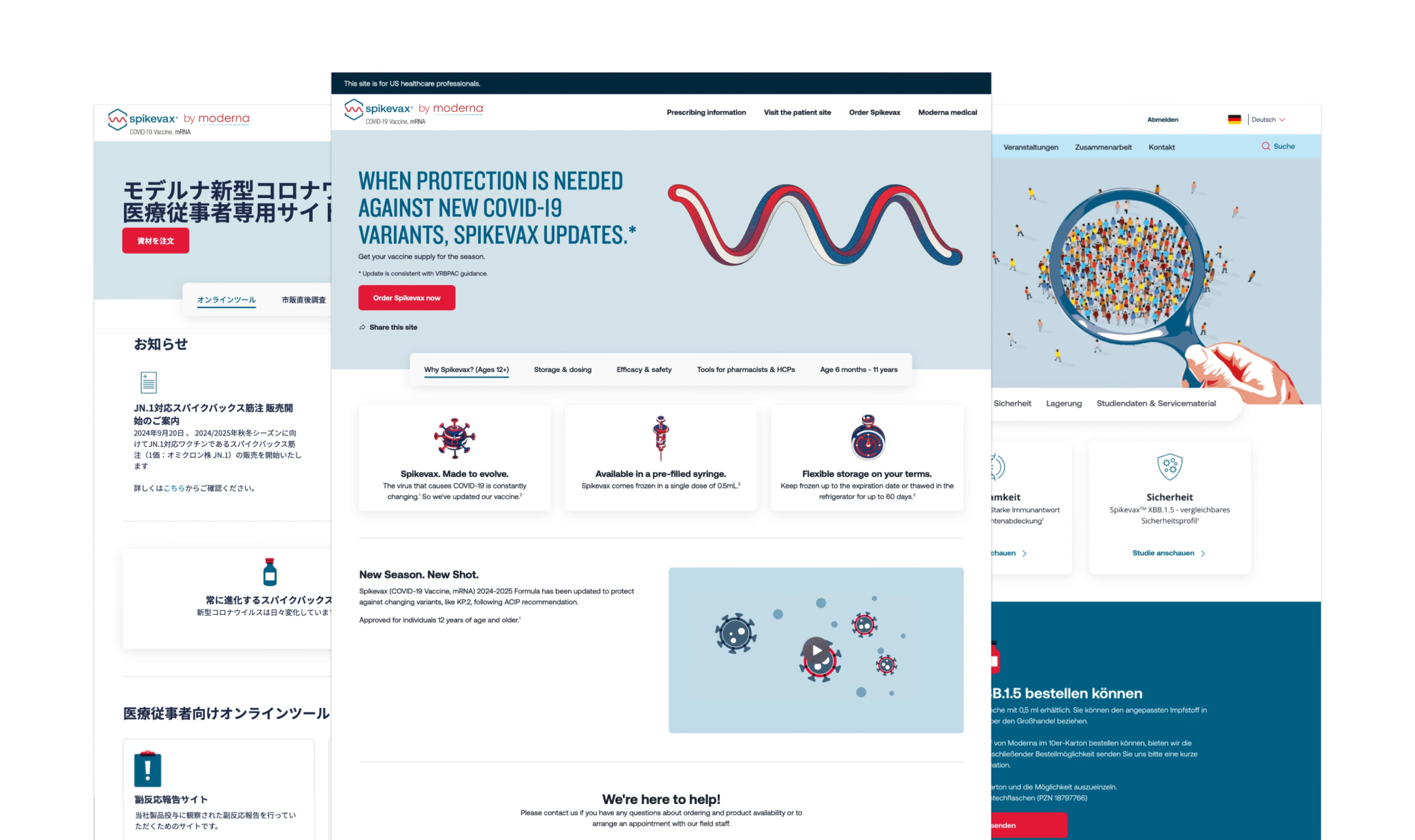
Overview
Moderna was spending millions building one-off marketing sites for COVID-19 products and expected to launch 15 additional products within 5 years. To scale efficiently, we needed a reusable, cost-effective solution. Additionally, we needed sites built trust with users, and were complaint across many different regulatory environments.
I led the design of a modular website system – templates, component library, and governance – that marketing and engineering could assemble rapidly for any launch. Result: ~$8.4M saved per year and development cycles reduced from 6 months to 1 week.
Role
Principal UX design lead
responsibilities
Design framework; Partnered with legal and regulatory teams across the globe to meet each region’s compliance; managed junior designers
collaborators
Engineers, product managers, global marketing leads, regulatory team
impact
Development cycle reduced from 6 months to 1 week; $8.4M saved annually; Reduced bounce rate by 30%; Resolved 95.8% of accessibility issues
The project
Customer problems
Global marketing leads needed a faster, lower-effort way to launch sites that stayed on-brand–while still giving them the flexibility to localize content for their audience and comply with country-specific regulations. End customers struggled to understand critical information. Storage/handling and administration steps weren’t clearly presented, creating confusion and errors.
Business problem
Moderna’s reliance on bespoke, one-off marketing sites drove multimillion-dollar spend and slow time-to-market – an unsustainable model with 15 launches planned in the next five years.
Success metrics
Reduce the number of Moderna websites; reduce the time to develop a marketing site by at least 50%; migrate all Spikevax sites to templates and the latest Moderna design system
Approach
Groundwork: Content audit, market analysis, and interviews
I audited Moderna’s global sites and other marketing sites from pharmaceutical companies, cataloging page types and content patterns. I built a content inventory and taxonomy. I also interviewed global marketing leads and regulatory partners to map country-specific rules.


Mix-n-match modules for faster launches
I explored different site frameworks: narrative, scroll-based layouts and tabbed information architecture so consumers and HCPs could jump between sections quickly.
I also created a reusable module set (the common blocks markets use most). Markets could mix and match modules to fit local requirements, while engineering benefited from standardized, pre-defined components that accelerated development.
Validating with real users
I partnered with our UX researcher to run a UserTesting.com study. We A/B tested the new Spikevax site built on my template against the legacy site; clarity scores jumped and participants unanimously preferred the new experience. Second, we ran module-level usability tests on complex content. For example, for “Storage and handling,” we explored alternate presentations to identify the most understandable pattern before rollout.


Pilot in Australia
Australia served as the first market pilot. I partnered with the country marketing lead to build a RSV disease education site using the new template, documenting market-specific needs and edge cases. The objective was to validate fit-for-purpose, surface gaps, and capture improvement before a broader rollout.
Nine markets, one system
I led the global rollout, onboarding nine country teams to the new web system. I walked each market through how the templates, components, and governance worked, then partnered with local leads to identify gaps and country-specific needs. Where new modules were required, I prioritized and added them to the shared library.

Key insights
Reuse, then refine
Most markets preferred a starting point over a blank canvas. Germany assembled the first site using the modules; other European countries then cloned that configuration and tweaked the content for local needs.
Too restricted, then course-corrected
I initially locked down colors and fonts too tightly– an overcorrection that sped development but frustrated markets and limited local brand expression. I course-corrected by permitting a third brand color and custom headline font, preserving engineering simplicity while giving teams the latitude they needed.
The solution
Developing the marketing templates required balancing customization for campaign needs with maintaining engineering simplicity and development speed. A couple of examples:


The business impact
$8.4M
Annual savings
96%
Reduction in development time
30%
Reduction in bounce rate
470%
Increase in natural search traffic
“The new system has significantly improved our workflow by enabling us to focus directly on content development rather than spending time on designing templates from scratch.”
–Alfie Puey, Marketing lead in Australia
“Informative, organized, and easy to understand vaccine info – this is how I would describe the website. I would be very likely to recommend it, especially during flu and COVID seasons.”
–Healthcare professional research participant

